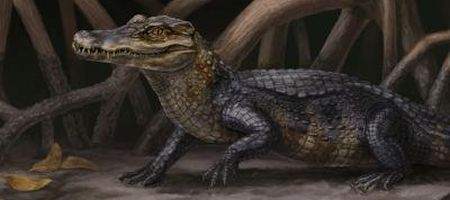Relatives of the alligator made it to North America ten million years earlier than mammals, swimming there more than 19 million years ago.

The uplift of the Isthmus of Panama 2.6 million years ago is known to have formed a land-bridge that’s long been thought to provide the route by which species spread. Armadillos and giant sloths moved up into North America, while relatives of modern horses, rabbits, foxes, pigs, cats, dogs, and elephants moved down into South America.
However, researchers from the University of Florida and the Smithsonian Tropical Research institute have now discovered the partial skulls of two new species of caiman, relatives of alligators, which live exclusively in South America today – and which shed a surprising new light on the history of interchange and animal distributions between the Americas.
The fossils were discovered in rocks dated from 19.83 and 19.12 million years old, exposed as the Panama Canal was expanded.
“These are the first fossil crocodilian skulls recovered from all of Central America,” says Alex Hastings of Georgia Southern University. “They fill a gap in evolution between the alligators of North America and the caimans of South America. It’s quite incredible.”
The discovery indicates that caimans had dispersed north from South America by the early Miocene – over ten million years earlier than the spread of mammals. It’s a bit of a surprise, as caimans can’t cope with salt water for very long, supporting a recent hypothesis that Central and South America were much closer to each other 19 million years ago than previously thought.
“We are starting to understand that while the mammals in Panama 19-21 million years ago were very similar to those found in Mexico, Texas, and Florida at that time, the reptiles tell a different story,” says Jonathan Bloch, a vertebrate paleontologist at the Florida Museum of Natural History.
“Somehow, they were able to cross over from South America when it was completely isolated by seaways — this is one of the mysteries that will drive future inquiry and research in this region.”






